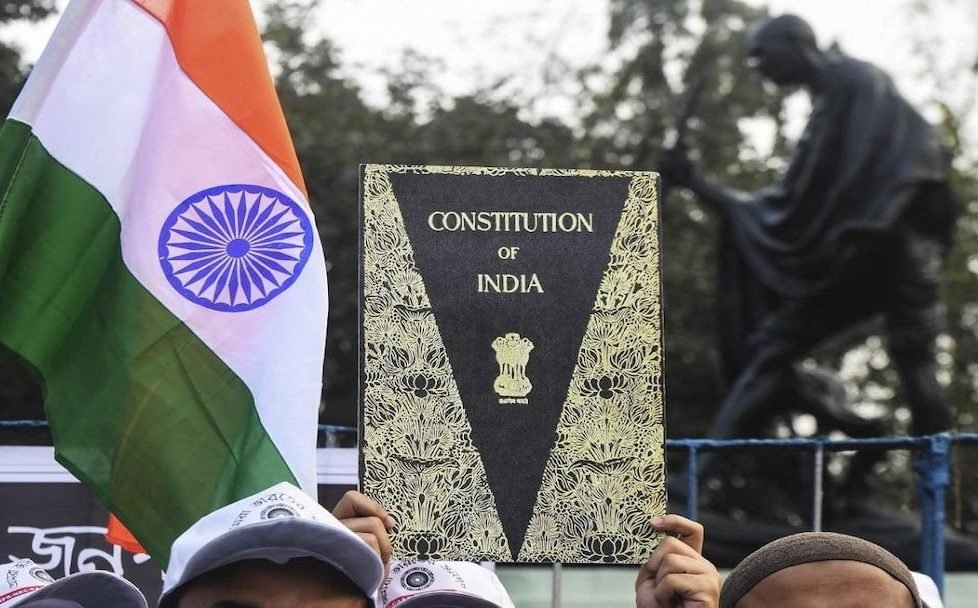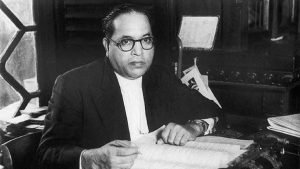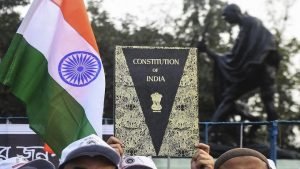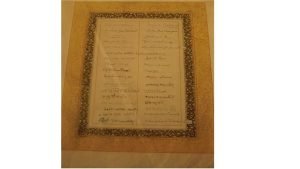Why was Ambedkar ready to burn his constitution?


On 15 August 1947, we Indians got freedom from the British rule. The process of preparing the constitution of the country had already started. For this, the Constituent Assembly was formed on 6 December 1946. The Constitution of India has come in its present form after passing through many processes. Let us know some interesting facts related to the Indian Constitution.
The Constitution of India was passed and adopted on 26 November 1949. This day is known as Constitution Day or National Law Day. We celebrate this day on the occasion of adopting the constitution of the country. The Constitution of India was implemented in the country on 26 January 1950. That’s why we celebrate 26 January as Republic Day.
There was also a historical reason for choosing the date of January 26 to implement the constitution. In fact, on January 26, 1930, the Indian National Congress had declared India as Purna Swaraj. To give importance to this date, the constitution was implemented on 26 January 1950.
First understand what is the constitution?
Constitution is basically the supreme book of any country. This is the book on which the constitutional structure of the country rests. If we say in simple words, then this is the book in which rules are written to guide the social, political and judicial system of the country. The constitution itself tells that what should be the basis of running the society? How to secure the rights of every citizen of the country? No person’s rights should be violated. Everyone should get equal chance to move forward.
Let us now discuss about the interesting facts related to the Indian Constitution
1. Baba Saheb was ready to burn his constitution?
This may sound a bit strange. But this is true. After independence, once such an occasion came when Baba Saheb Ambedkar, the architect of the Indian Constitution, wanted to burn this constitution. but why? We tell you its story. On 2 September 1953, there was a vigorous debate in the Rajya Sabha. The issue was to increase the powers of the Governor. During this discussion, Dr. Bhimrao Ambedkar strongly supported the constitutional amendment.
During the debate in the Rajya Sabha, Babasaheb had said, “Small communities and small people are always afraid that the majority may harm them. My friends tell me that I have made the constitution. But I want to tell you that I will also be the first person to burn it. I don’t need it because it is not good for anyone. Although our people want to go ahead with it but we have to remember that on one side there is majority and on the other side minority and Majority cannot say that we cannot give importance to minorities because it will harm democracy. I must say that harming minority will be most harmful.” In fact, Babasaheb was very conscious about the rights of minorities in a democracy. He was strongly against usurping the rights of the minorities by the majority in any way.

Two years later, on March 19, 1955, this issue arose once again. Rajya Sabha proceedings were going on. MP from Punjab, Dr. Anoop Singh raised Dr. Ambedkar’s statement once again. Then during the discussion on the Fourth Amendment Bill, he told Ambedkar that last time you said that you will burn the constitution?
Babasaheb immediately replied on the statement of Dr. Anoop Singh. He said, “I will answer you right here, right now. My friends say that last time I said that I wanted to burn the constitution. Last time I did not give the reason in a hurry. Now that my friend has given me a chance, I think I should tell the reason. The reason is that we built a temple for the Lord to live in but before the Lord was installed there, if a demon comes and lives there, apart from demolishing that temple What is fodder? We didn’t make it for the demons to live in. We made it for the deities. That’s why I said that I want to burn it.
2. 105 amendments made in the constitution so far
Our Indian constitution is neither rigid nor more flexible like other countries. But of course it can be modified. Till date, a total of 105 amendments have been made in it. The most famous of these is the 42nd amendment of 1976. This amendment was done in an emergency and the Preamble of the Constitution was amended by adding 3 words. Those three words were Secular, Socialist, And Integrity.
3. World’s longest and largest constitution
The Indian Constitution is the longest and most voluminous constitution in the world. Today it has about 25 parts, 12 schedules and 448 articles. The thing to note here is that India is the only Sovereign and Republic country, which has this diversity. It was signed by 284 members of the Constituent Assembly on 24 January 1950. There were also 15 women in it. Among them was Durgabai Deshmukh, wife of CD Deshmukh, the first Indian Governor of RBI. Along with this, some other women like Vijayalakshmi Pandit, Sarojini Naidu, Ammu Swaminathan, Dakshinayani Velayudan, Begum Raisul have made a special contribution in the making of the constitution.

4. Constitution of India is Handwritten
Indian Constitution was neither typed nor printed. It was completely written manually by calligrapher Prem Bihari Narayan Raizada. It was written in calligraphy and some basic italic style. For this he was given a special status. He was also allotted a special room in the Constituent Assembly. This writing took about six months to complete. He used 432 nib number 303 to write. This nib was imported from Birmingham. It is worth knowing that he did not take a single penny for this. He only sought permission to write his name and his grandfather’s name on every page of it. It was published in Dehradun and photolithography was done by the Survey of India.
5. The Constitution of India is a bag of borrowings

The basic basis of the Constitution of India is considered to be the provisions of the Government of India Act 1935. To make it, apart from 10 major countries, the help of more than 60 constitutions existing at that time was taken, that is why the Indian constitution is also called Bags of borrowings.
6. What was taken from which constitution of the world?
1) American Constitution- Fundamental Rights and Judicial System
2) French Constitution- Liberty, Equality and Fraternity
3) South African Constitution:- Amendments to the Indian Constitution
4) Russian Constitution- Fundamental Duties
5) German Constitution- Emergency Powers to the Center
6) Irish Constitution Constitution- Directive Principles, Election of the President
7) Australian Constitution- Concurrent List, freedom of service and trade in the country
8) Canadian Constitution- Centre-State relations
9) British Constitution- Single citizenship, parliamentary form
10) Japanese Constitution- Parliament Supreme Power
7. Constitution in two languages
The Constitution of India was written in two languages English and Hindi. In such a situation, all the members of the Constituent Assembly had to sign in two languages. The original copy of the Constitution is kept in the Library of Parliament in special boxes filled with helium. So that this original copy of the constitution can be kept safe for a long time.
DISCLAIMER: The author is solely responsible for the views expressed in this article. The author carries the responsibility for citing and/or licensing of images utilized within the text.
